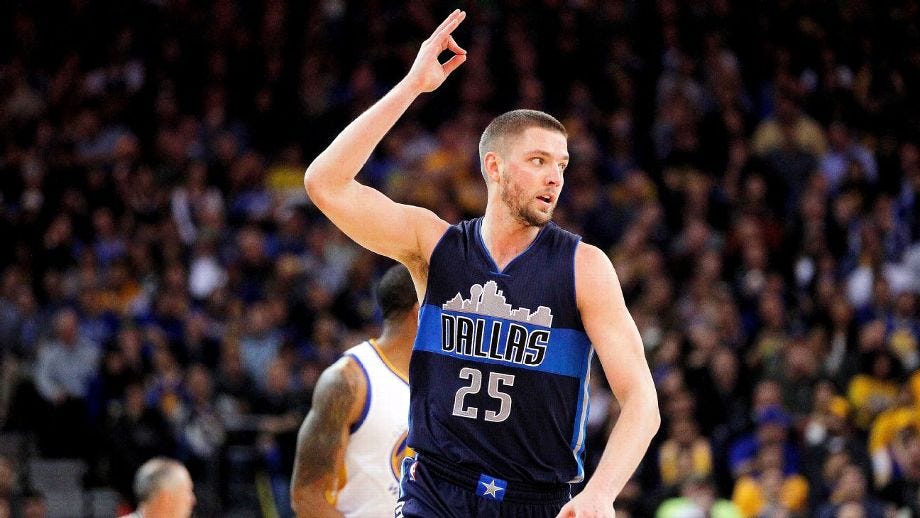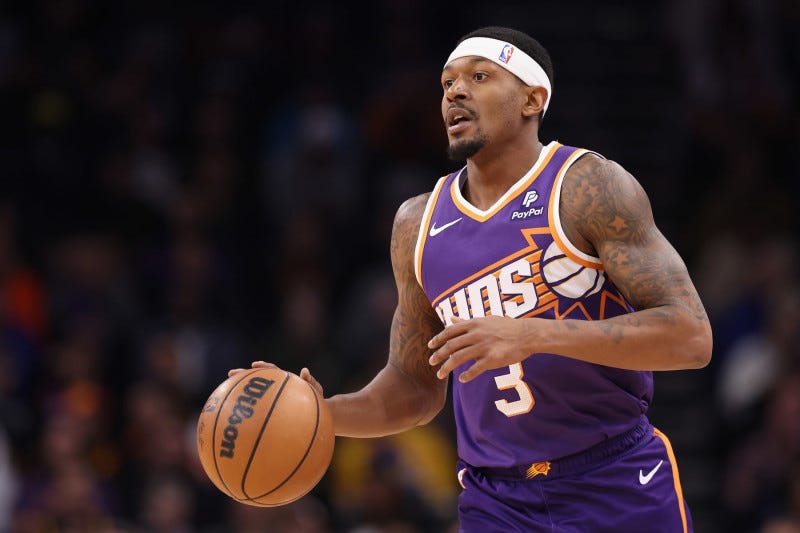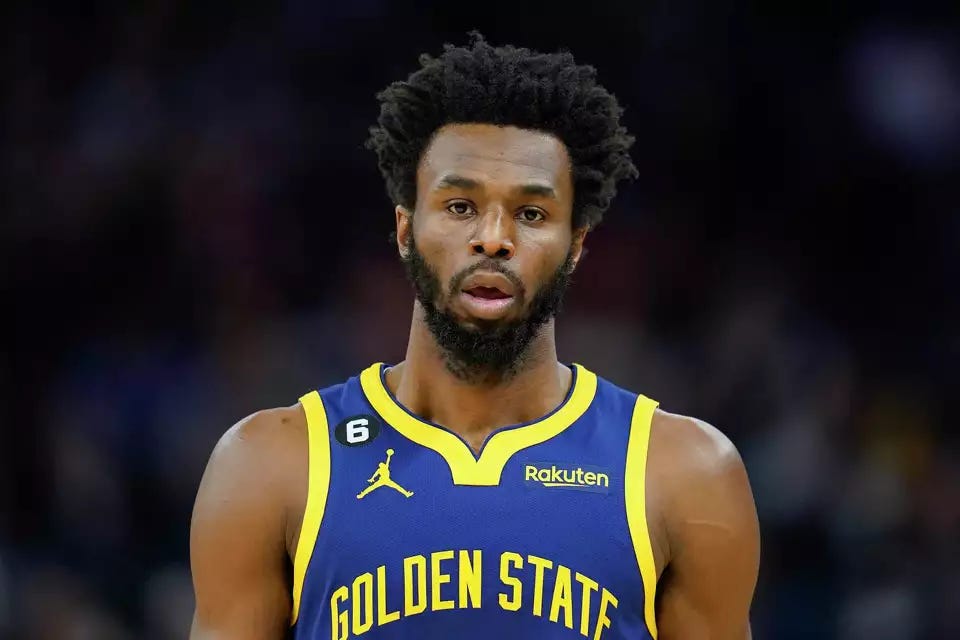The NBA's 3 Most Untradeable Contracts for the 2025 Season
Fans of these players teams should get used to them, whether they like it or not.
Photo by Cary Edmonson/USA TODAY Sports
The NBA makes a lot of money. Likewise, their players are rewarded for helping to achieve that being allowed to receive a lot of money from NBA teams as well. We remember the 2016 offseason, when players like Timofey Mozgov, Luol Deng, and Chandler Parsons were making $16+ Million and there performances made those look like highway robberies. When a team makes a mistake like that, trading the player is the best thing to do for their franchise, so as to give them more financial freedom for future trades and signings.
The thing is, other teams aren’t dumb.
High paying contracts for mediocre players with multiple years left in their contract are some of the least enticing assets in the NBA. Trading away a contract like that would usually mean attaching other valuable assets like first round picks; like a “thank you” to the other team for accepting the team’s mistake. Today, we will be looking at some of the player contracts that are pretty much untradeable in the NBA today, even if a team would let that player go for a copy machine.
Here is a list of criteria that will be used to judge how bad a player’s contract is :
Money owed to the quality of player. If we are paying someone $50+ Million for at least 2 more years to not even average 20 PPG (foreshadowing), then that is a contract you wish you could trade, but no one would even want (or afford).
Years left in the contract. Expiring contracts means that a team trading for them doesn’t need to pay that player by the next offseason. Multi-year contracts means that team has to get used to that players production and if its not good, who would want that ?
Comparable and desirable contracts that can be traded for (or lack thereof). I would explain this as a player making $15 to $19 Million can be packaged with other young players to make the money make sense to trade up for a player actually worth $30 Million. When there’s no way for a team to do that, it will be hard to even find a compatible deal in the first place.
Projected performance of the player throughout the contract. Simply put, I wouldn’t want to pay a player heading into his mid 30s a lot of money when he’s expected to regress by then.
With this criteria in place, let’s look at some contracts that will probably continue to be in trade rumors rather than actual trades.
Bradley Beal (3 Years, $161 Million, Player Option Last Year)
Photo by Christian Petersen/Getty Images
Starting of with probably the most untradeable contract in the NBA right now, Bradley Beal will likely stay a Sun until the end of his contract, which may be news Suns fans wouldn’t want to hear. His last year is a player option that would entitle him to $57 Million and if he were to take that money, he will be taking up a massive chunk of the Sun’s salary space as a 33 year old. Beal was brought in for the 2024 season to create an offensive juggernaut core along with Kevin Durant and Devin Booker.
That ended up not working, as the Suns were swept by the Wolves in the first round. Beal averaged 18 PPG, 4.4 RPG, and 5.0 APG on 51.3% FG. Numbers that aren’t lackluster, but for $50 Million ? Nope. Beal will be coming into the 2025 season as the 5th highest paid player with KD being 4th and DBook being 7th. That gives the Suns the most expensive roster in NBA history. KD and DBook are productive players, even with KD reaching the last few years of his career.
That leaves Bradley Beal as a sorely underperforming player for how much he is making and what he will be expected to be by the end of his contract. As much as the Suns would want to move his contract to continue building around their two best players, Beal’s contract will not be taken up by anyone currently and that will continue to restrict them until his contract is up. Beal’s massive contract would also mean that teams would have match his contract with multiple players to acquire him and with his lessened value, that is hard to justify when his production can be found elsewhere for cheaper. The Suns also have no first round picks until 2031, which is already bad, and means that they can’t add those assets to compensate to their imaginary trade suitor.
Zach Lavine (3 Years, $138 Million, Player Option Last Year)
Getty Images
It feels like Zach Lavine trade rumors have been some of the top headlines for the past two offseasons, and he will still be wearing a Bulls jersey to start the 2025 season. That’s enough to put him on this list.
What makes it so hard for the Bulls to finalize the deal has been not taking advantage of his higher value in previous years when he was more productive and healthy. The trade market for Lavine at the moment is dry and it makes sense when you factor in that teams would need to make $40 Million in space to accommodate him and his 2024 season being his lowest scoring and least healthy season since 2019. The Bulls are looking to rebuild for a few seasons and Lavine doesn’t really fit that timeline. He is more suited to play for a more competitive team that is in need for a dynamic scorer who is currently 28.
Currently, it just seems like the Lakers are the only teams people are making up trades and rumors for, and we know how those usually go ever since they traded for Anthony Davis. His contract is also in the price bracket that makes it hard to make a package that would teams would consider. The Bulls would have to give up some picks to trade Lavine, which goes against the current direction they are going.
Andrew Wiggins (3 Years, $84 Million, Player Option Last Year)
Photo by Godofredo A. Vásquez/ AP Photo
The Warriors probably want to move on from Andrew Wiggins. He helped them to a championship in 2022, but ever since then he has noticeably regressed. In 2023, he only played in 37 games due to personal reasons. In 2024, he averaged a career-low 13.2 PPG for a Warriors team that didn’t make it out the play-in. It doesn’t take too a genius to see that Wiggins could have possibly been very affected by what happened in 2023 which is unfortunate to hear. However, it doesn’t help that with his current career trend, he may not be able to contribute meaningfully for the Warriors while he is under contract.
It is very clear that the Warriors want to maximize the time they have left with Stephen Curry for one last championship window. This needs to happen fast as he is already 36 and probably has a maximum of 3 seasons as a highly impactful superstar. Wiggins’ regression in his play and being overtaken by the younger players on the Warriors comes at a bad timing knowing this. I still do think that Wiggins still has the tools and time to become a quality role player in the next few years but that may be a probability the Warriors aren’t willing to bet on. What makes him hard to trade is that teams would not want to trade for a player making close to $30 Million whose points production and 3PT FG% is going down.
I do feel that him being 29 and the fact that he was able to play 71 games last season does make him easier to trade than the two other players mentioned earlier.
However, doing some process of elimination:
Rebuilding teams would probably not want to trade for his contract until he becomes an expiring contract.
Other contending teams in the West have there Starting Small Forward settled or can’t accommodate his contract. MPJ on the Nuggets. Derozan on the Kings. Jalen Williams on OKC. These are just some players who are not superstars but are examples of players that teams would not get Wiggins to replace.
Wiggins’ getting traded would be a big help for the Warriors to extend their dynasty for one more run, and it might get a bit tricky but not impossible.
(Dis)Honorable Mentions
Here are some players who had some considerations to making this list but had redeeming parts to their current situations that may make their contracts not as unbearable :
Photo by Mary Altaffar/AP Photo
Ben Simmons (1 Year, $40 Million) : If we are talking about the player who is least worth how much he is making this year, it is probably Ben Simmons, who averaged 6/8/6 and only played 15 games in 2024. What makes this less painful for the Nets is that this is his last year of his contract, which coincides perfectly with the Nets wanting to be bad and makes his contract somewhat tradeable to teams who want to accelerate their salary space savings for next offseason. He also is incentivized to perform better this season so as to keep his NBA job.
Jordan Poole (3 Years, $95 Million) : Poole was probably who you expected to make the list, and for some good reasons. He just had a very disappointing season after being shipped from the Warriors, averaging 17/2/4 on 41/33/88 shooting splits. However, he would make the list if he was older. This guy is still 25 years old and we have to see at least two more seasons of him settling in to the load he is given now before we really evaluate how he is as a player. I do feel that currently, he is more of a ceiling raiser for a team, meaning a better team around him may help Poole’s production as a non-first option, thus making his contract at least a little more valuable and tradeable.
Deandre Ayton (2 Years, $70 Million) : Simply put, Ayton doesn’t look like he fits the rebuild roadmap of the Blazers, who just drafted Donovan Clingan. Moving a $35 Million per year player whose production is just slightly above average immediately may be hard as teams would want a center who can space the floor more and has more effort on defense. What saves him from the top 3 is that he is still young and may be a more tradeable asset next season where he will be an expiring contract.
Moral of the story : Teams want to save money, and team-friendly contracts help do that and give cap flexibility for future moves. Just look at what Stephen Curry’s rookie extension has done for them.
Teams are still willing to shill out so much money and go way over cap even with all the new salary cap and apron updates. The fact that even these teams wouldn’t trade for these contracts just shows how undesirable these player’s have become. Trying to unload players who are worth WAY less than their contracts on teams will just leave your phone dry and you contemplating some of your managerial choices.
Blame 2016.





